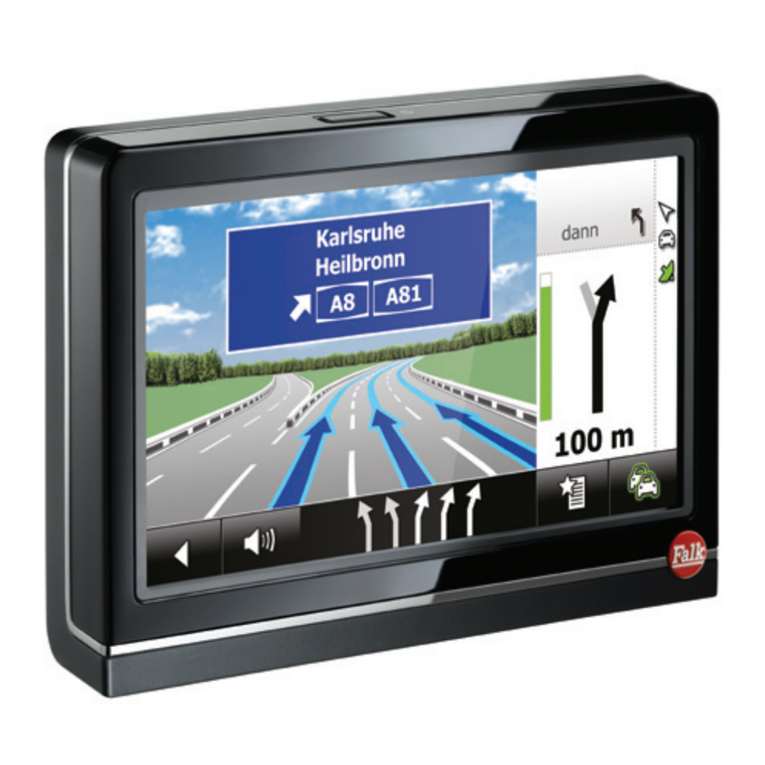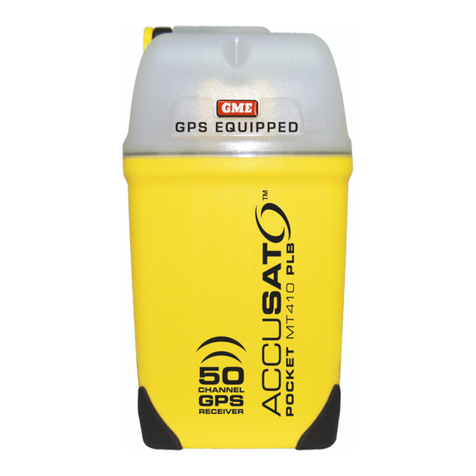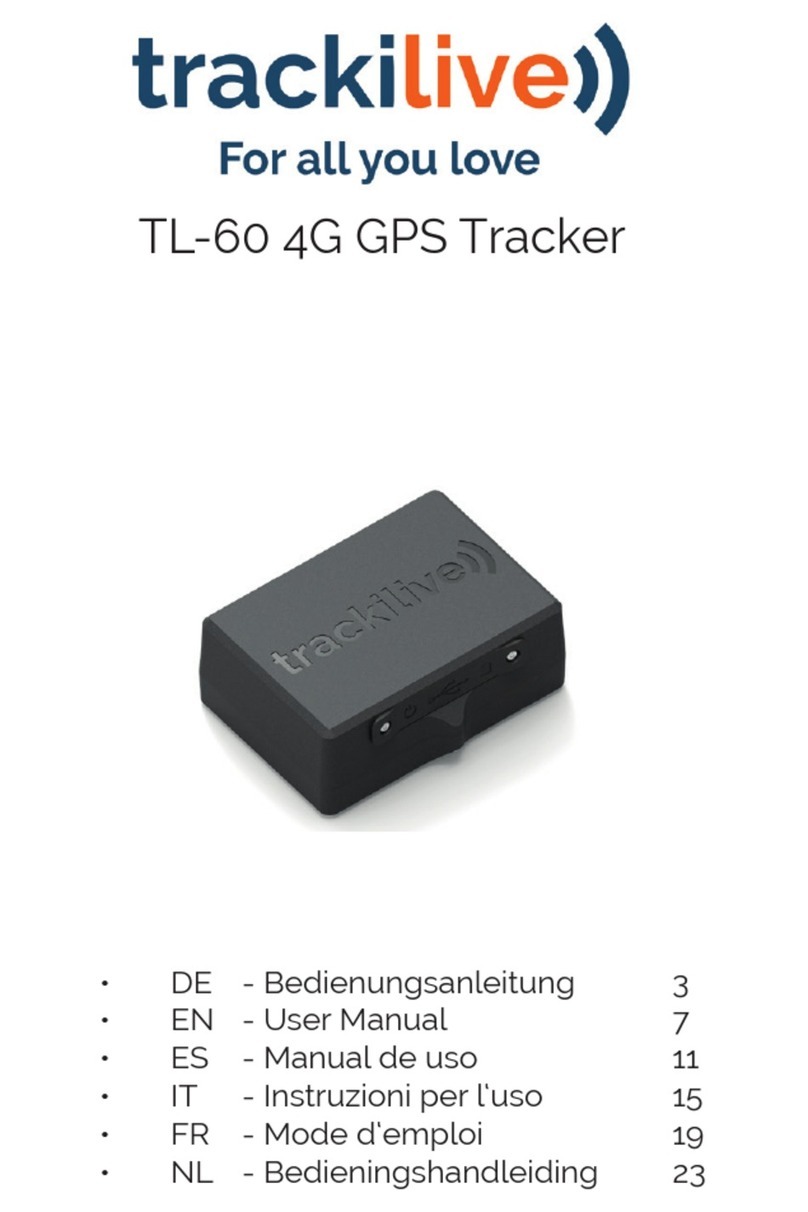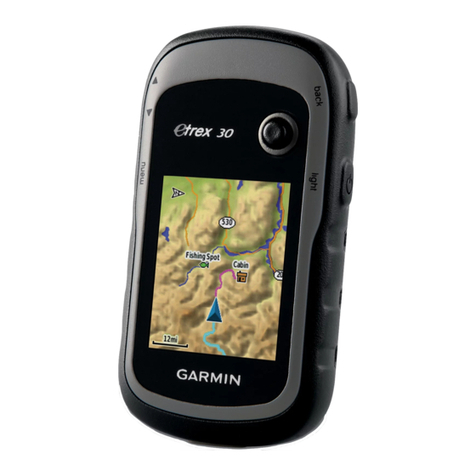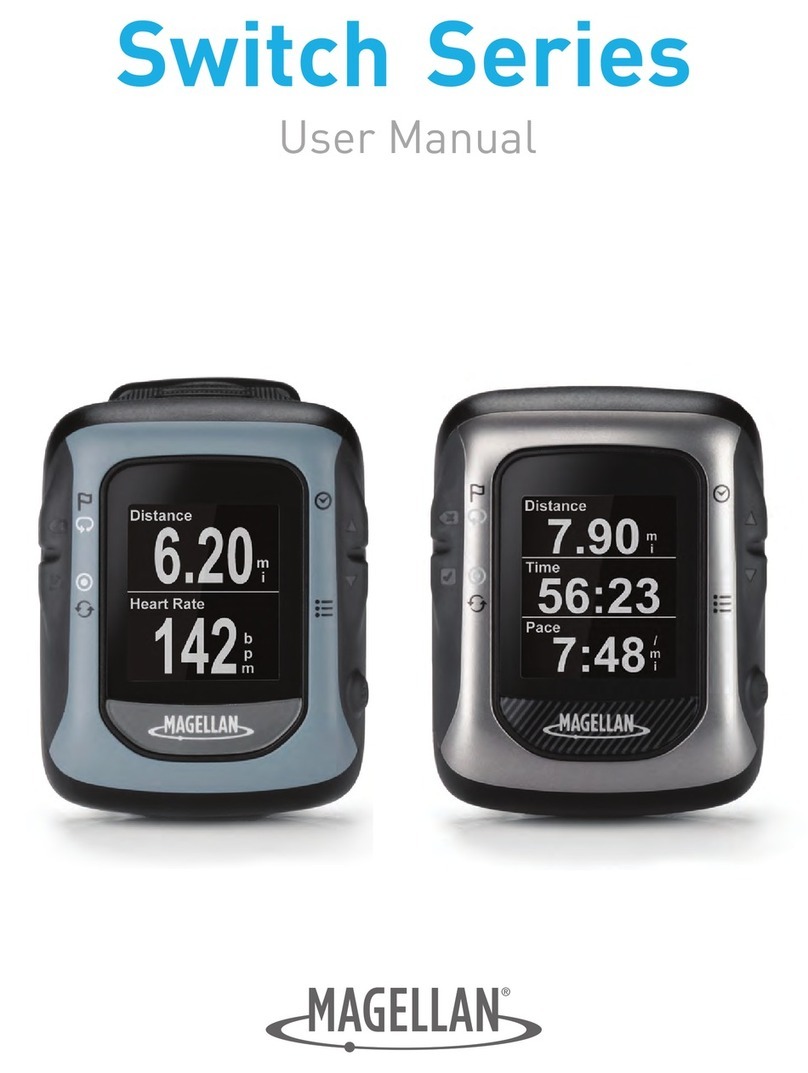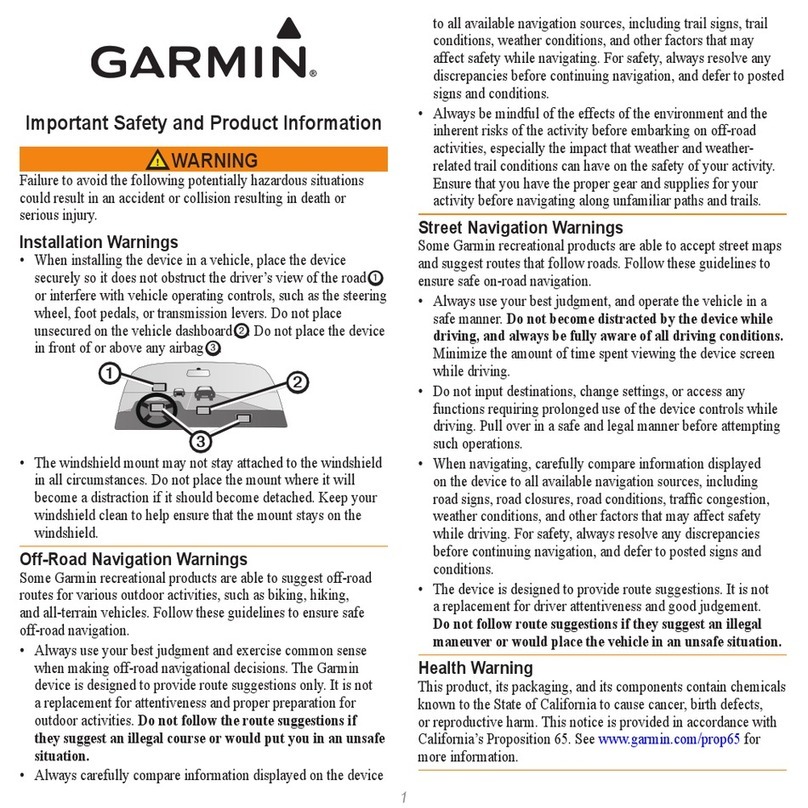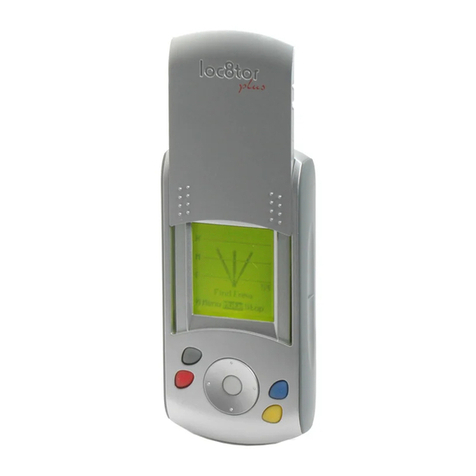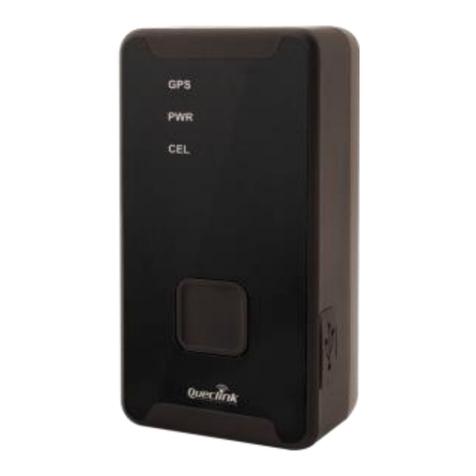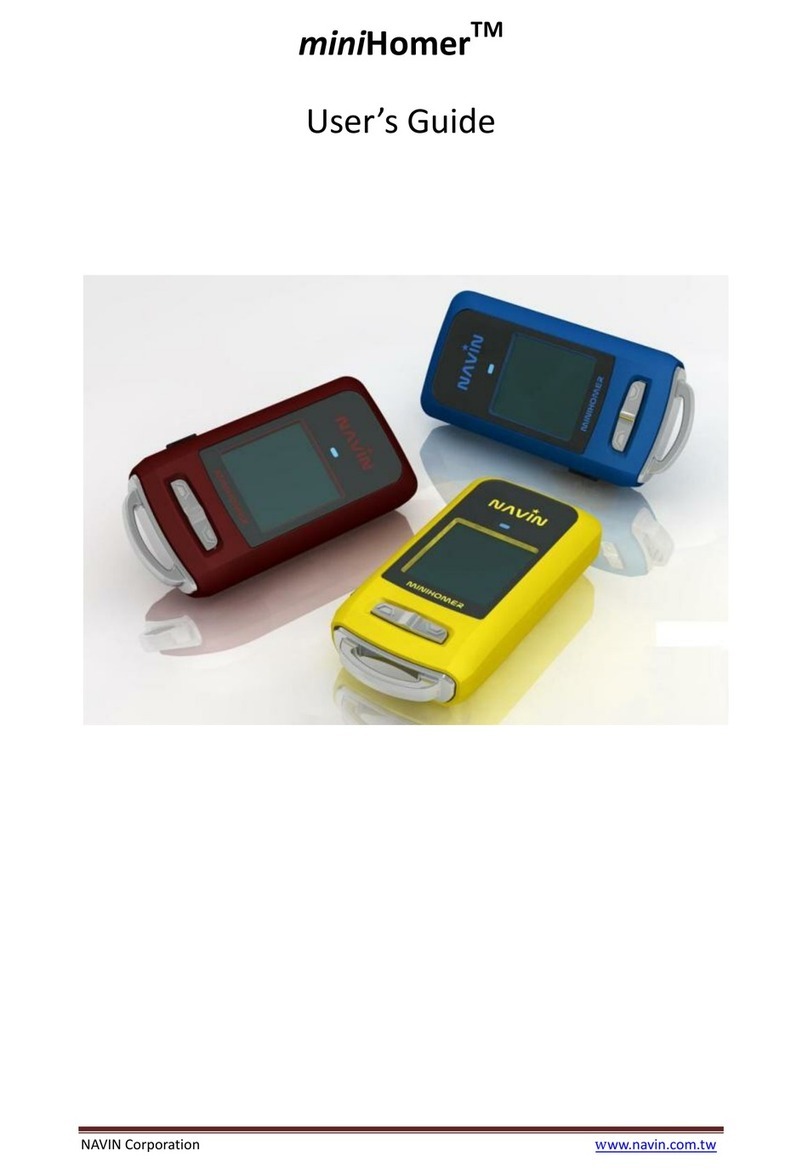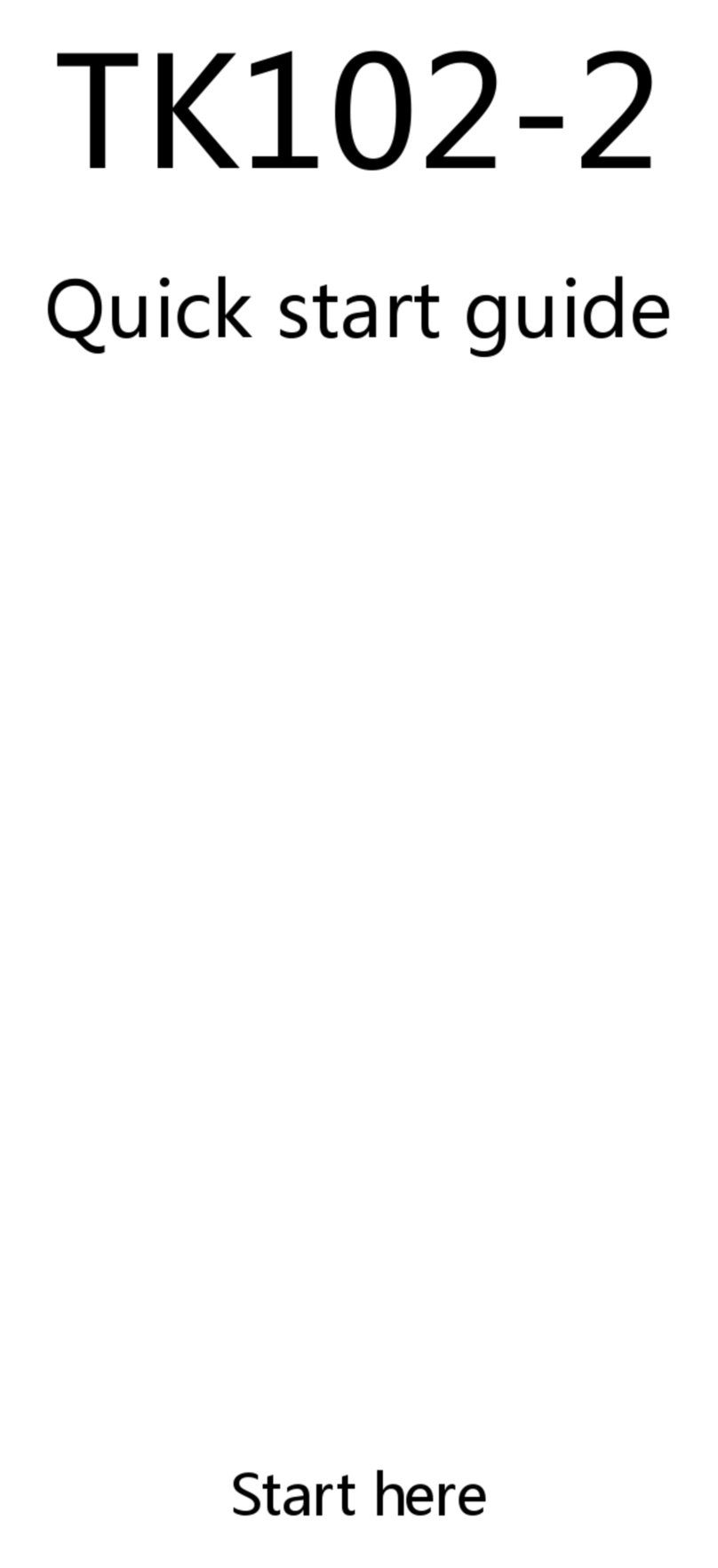Esterline CMA-9000 User manual

OPERATOR'S MANUAL
FLIGHT MANAGEMENT SYSTEM
CMA-9000
OPERATIONAL PROGRAM
S/W 169-614876-300
Esterline CMC Electronics
600 Dr. Frederik Philips Boulevard
Ville Saint-Laurent, Quebec, Canada
H4M 2S9
Publication No. 9000-GEN-0150 November 19, 2009
Item No.: 930-600086-000 Revision 2 March 01, 2010
This page is printed under user's responsibility
and must not be retained for reference

This Page Intentionally Left Blank
This page is printed under user's responsibility
and must not be retained for reference

WE VALUE YOUR COMMENTS
PLEASE EVALUATE OUR PUBLICATION
AND LET US KNOW
Although we constantly strive for accuracy and clarity, we may make errors on occasion.
If we do, we would appreciate your comments to improve this manual.
Please use our web-based Customer Support Request form at
http://www.cmcelectronics.ca/customer-support-request-form.aspx to inform us of any
correction or send us a marked-up copy of this publication using the form below. We will
acknowledge your comments and notify you of any intended action.
Your assistance in improving this manual is sincerely appreciated.
This page is printed under user's responsibility
and must not be retained for reference

This Page Intentionally Left Blank
This page is printed under user's responsibility
and must not be retained for reference

OPERATOR’S MANUAL
CMA-9000 FLIGHT MANAGEMENT SYSTEM
Page TC-1
November 19, 2009
TABLE OF CONTENTS
Subject Section/Appendix
Introduction Section 1
CMA-9000 FMS Control and Display Section 2
Preflight Section 3
Departures Section 4
Enroute Section 5
Arrivals Section 6
Approach Section 7
Post-Flight Procedures Section 8
Direct-To/Intercept Section 9
Holding Pattern Navigation Section 10
Tactical Functions Section 11
Navigation Sensors Section 12
CMA-9000 FMS Pages - Radio Tuning Section 13
Performance Functions Section 14
RNP Capability Section 15
MCDU Functions Section 16
Abnormal Procedures Section 17
CMA-9000 FMS Pages - Detailed Descriptions Appendix A
Navigation Leg Type Definitions Appendix B
Navigation Displays Appendix C
CMA-9000 FMS Display Pages Flow Diagrams Appendix D
System Messages and Remote Annunciations Appendix E
Index INDEX
This page is printed under user's responsibility
and must not be retained for reference

OPERATOR’S MANUAL
CMA-9000 FLIGHT MANAGEMENT SYSTEM
Page TC-2
November 19, 2009
This Page Intentionally Left Blank
This page is printed under user's responsibility
and must not be retained for reference

OPERATOR’S MANUAL
CMA-9000 FLIGHT MANAGEMENT SYSTEM
Page 1-i
November 19, 2009
SECTION 1 - INTRODUCTION
CONTENTS
Subject Page
SYSTEM OVERVIEW......................................................................................................................................... 1-1
COMPONENT DESCRIPTION ........................................................................................................................... 1-2
A. FLIGHT MANAGEMENT SYSTEM (FMS) WITH EMBEDDED DISPLAY UNIT ..................................... 1-2
B. EXTERNAL GLOBAL POSITIONING SYSTEM (GPS) RECEIVER........................................................ 1-2
NAVIGATION MODES........................................................................................................................................ 1-3
CIVIL NAVIGATION MODE................................................................................................................................ 1-3
A. GPS........................................................................................................................................................... 1-4
B. DME/DME.................................................................................................................................................. 1-4
C. VOR/DME/TACAN .................................................................................................................................... 1-5
D. Inertial....................................................................................................................................................... 1-5
E. KALMAN FILTER ..................................................................................................................................... 1-5
F. DEAD RECKONING (DR)......................................................................................................................... 1-5
MILITARY NAVIGATION MODE........................................................................................................................ 1-6
A. Hybrid GPS/Inertial.................................................................................................................................. 1-7
B. GPS (or cGPS/mGPS* for dual GPS installations)............................................................................... 1-7
C. DME/DME.................................................................................................................................................. 1-8
D. VOR/DME/TACAN .................................................................................................................................... 1-8
E. Hybrid INS/DVS........................................................................................................................................ 1-8
F. Inertial....................................................................................................................................................... 1-8
G. DVS ........................................................................................................................................................... 1-8
H. KALMAN FILTER ..................................................................................................................................... 1-9
I.DEAD RECKONING (DR) ............................................................................................................................. 1-9
WAYPOINT NAVIGATION ................................................................................................................................. 1-9
TERMINAL AREA OPERATIONS AND GPS INSTRUMENT APPROACHES............................................... 1-11
NAVIGATION DATABASE............................................................................................................................... 1-11
PHASES OF FLIGHT........................................................................................................................................ 1-11
ACRONYMS AND ABBREVIATIONS.............................................................................................................. 1-12
This page is printed under user's responsibility
and must not be retained for reference

OPERATOR’S MANUAL
CMA-9000 FLIGHT MANAGEMENT SYSTEM
Page 1-ii
November 19, 2009
This Page Intentionally Left Blank
This page is printed under user's responsibility
and must not be retained for reference

OPERATOR’S MANUAL
CMA-9000 FLIGHT MANAGEMENT SYSTEM
Page 1-1
November 19, 2009
SECTION 1
INTRODUCTION
SYSTEM OVERVIEW
The CMA-9000 FLIGHT MANAGEMENT SYSTEM (FMS) provides a complete Global Navigation System (GNS)
and area navigation (RNAV) solution for world-wide four-dimensional aircraft navigation in the oceanic/remote,
en-route, terminal and non-precision approach. It includes extensive flight management capabilities and a full
range of navigation and flight planning features, together with simple route and flight plan creation and
modification procedures. A world-wide subscription navigation database, stored in a non-volatile memory,
provides the CMA-9000 FMS with information on waypoints, navaids and airports. In addition the database is
capable of storing customer defined routes and waypoints. The CMA-9000 FMS is a Flight Management
System (FMS) which also integrates the functionality of Radio Management System (RMS) and Control Display
Unit (CDU) into a standalone, cockpit mounted enclosure.
The CMA-9000 FMS accepts data from the following external navigation sensors, if installed:
Sensors Civil Certified/Approved/Military
Distance Measuring Equipment (DME) Civil certified
VHF Omni-directional Range (VOR) Civil certified
TACAN Civil and Military installations
External GPS Civil certified or Military (not approved for civil certified
installation)
External Embedded GPS/INS (EGI) Military (not approved for civil certified installation)
Inertial Reference System (IRS) Civil certified
Doppler Velocity Sensor (DVS) Military (not approved for civil certified installation)
Air Data Computer Civil certified
Heading Source (AHRS) Civil certified
AHRS (when used with Kalman Filtered Navigator) Civil certified
Information from these sensors is combined with air reference data inputs of heading, true air speed and altitude
to determine aircraft position. This position is then used for navigating along a programmed flight plan created
by selecting waypoints along a desired route from the navigation database (flight planning).
In dual/triple CMA-9000 FMS installations, the systems can be configured in either independent or synchronized
mode automatically upon startup.
Flight management capabilities include:
•Multi-sensor navigation modes with available sensors
•Standard Instrument Departure (SID)
•Standard Terminal Arrival Routes (STAR)
•GPS instrument approaches
•Direct-to/intercept navigation, holding patterns, procedure turns, arcs, offset tracks and search patterns
•Automatic waypoint sequencing, with and without turn anticipation
•Required and actual navigation performance (RNP/ANP)
This page is printed under user's responsibility
and must not be retained for reference

OPERATOR’S MANUAL
CMA-9000 FLIGHT MANAGEMENT SYSTEM
Page 1-2
November 19, 2009
•Required time of arrival (RTA)
•Fuel management and radio tuning functions
•CARP
COMPONENT DESCRIPTION
A. FLIGHT MANAGEMENT SYSTEM (FMS) WITH EMBEDDED DISPLAY UNIT
The provides a color display of alphanumeric data. An alphanumeric keyboard allows data entry, data
editing and system control of the flight management functions.
The display is a sunlight readable color Active Matrix Liquid Crystal Display (AMLCD). Dedicated function
keys and line select keys allow easy operator control of flight management functions. The keyboard panel is
integrally lit from a panel light dimming bus. The CMA-9000 FMS panel is illustrated in Section 2 along with
an explanation of the keys and their function.
For the control of the display brightness, two options are proposed. The first option consists in the
combination of light sensors and manual brightness setting. Two light sensors on the CMA-9000 FMS front
panel sense any change in the cockpit ambient light level. This results in an increase or decrease in display
brightness relative to a manual brightness setting. The second option consists in an external dimming bus.
The Flight Management Unit (FMU) accepts data from external navigation sensors and performs all the
signal processing and computations required to generate high performance navigation data. The FMU
accepts operator’s commands from the alphanumeric keyboard, provides navigation, steering and status
data on its own display and to the primary navigation flight displays. The FMU also provides suitably
formatted outputs for the flight guidance system.
B. EXTERNAL GLOBAL POSITIONING SYSTEM (GPS) RECEIVER
The external GPS Receiver receives signals transmitted by US DoD Global Positioning System satellites. It
provides all the signal processing and computational capability required to determine aircraft position,
velocity and time. The sensor continuously monitors the integrity of the satellites using a high performance
Receiver Autonomous Integrity Monitor (RAIM).
This page is printed under user's responsibility
and must not be retained for reference

OPERATOR’S MANUAL
CMA-9000 FLIGHT MANAGEMENT SYSTEM
Page 1-3
November 19, 2009
NAVIGATION MODES
The CMA-9000 FMS is providing a Military or Civil configuration option; integrity monitoring and resulting
consequences as required by TSO-C115b, AC20-130A and DO-236A are the main differences between the two
options.
CIVIL NAVIGATION MODE
When in the civil navigation option, the sensor navigation solutions will be assumed not to have integrity unless
proven otherwise. The navigation modes selection logic is geared to safety (integrity) and the CMA-9000 FMS
may force mode transitions to remain in a navigation mode with integrity, thereby also preventing unnecessary
alarms from being raised. This configuration option is intended to fully comply with TSO-C115, AC20-130A and
the integrity requirement of DO-236A.
The CMA-9000 FMS will determine integrity, availability and accuracy for each navigation mode solution.
A navigation solution will be available if sufficient data required to compute the solution is received from the
sensor source and no critical failures are detected. For each navigation solution, a horizontal position sensor
value, Navigation Performance (NP), will be determined. The probability of the error exceeding the NP
containment value will be no more than 10-5 per hour for the variables monitored. For some navigation solutions,
insufficient data may not ensure that the required probability is always met. In this case, when in the military
navigation option, the CMA-9000 FMS will nevertheless compute a NP value using the available data. In this
same case, when in the civil navigation option, the CMA-9000 FMS will make the NP value unavailable.
When in the civil navigation option, a navigation solution will be deemed to have integrity if:
•The solution’s NP value is less than the active error limit and,
•For some sensors where the NP does not include all the necessary variables to ensure the required
probability is always met, other criteria ensuring integrity are met. If integrity can never be assured, the
CMA-9000 FMS will declare the navigation solution for a specific sensor never having integrity. The error
limit can be configured to either Phase of Flight (POF) or Required Navigation Performance (RNP).
All accuracy-based transitions will use the 95% probability error statistics and will include a hysteresis value of
100m, except for the transition from GPS to INS/GPS sensor and the transition from VOR/DME with integrity to
DME/DME with integrity. The transitions for these two cases will be done without hysteresis. This is also
applicable when the navigation sensor cross-check is configured. In a configuration with multiple FMSs, a
hysteresis of 100m will also be applied when switching from a sensor to another identical sensor but from a
different FMS.
The CMA-9000 FMS has the following navigation modes: Hybrid GPS/INS, GPS (or cGPS), mGPS, DME/DME,
VOR/DME/TACAN, hybrid INS/DVS, Inertial, Doppler, KALMAN and Dead-Reckoning (DR). The availability of
specific navigation modes depends on the equipment configuration.
This page is printed under user's responsibility
and must not be retained for reference

OPERATOR’S MANUAL
CMA-9000 FLIGHT MANAGEMENT SYSTEM
Page 1-4
November 19, 2009
Available sensors are selected in the following order of priority, based on nominal accuracy performance:
Navigation modes Applicability
GPS GPS sensor
DME/DME DME sensor
NAV, DME sensorsVOR/DME/TACAN* NAV, DME, TACAN* sensors
EGI sensorInertial IRS sensor
Emulated INS via KALMAN FILTER APIRS/AHRS equipment
Dead Reckoning N/A
*When TACAN is proven accurate for Civil navigation.
A. GPS
GPS is normally the highest priority navigation mode of the FMS and will be used when sufficient satellite
coverage exists in the phases of flight for which it is approved.
The GPS mode will be selected for navigation when its RAIM function (or FMS’s computed NAIM when a
backup navigation sensor is also available to the FMS) computes a Horizontal Integrity Limit (HIL) value
which is less than the GPS Position Integrity Alert Limit (GPIAL). The latter is a function of the current phase
of flight and of the Required Navigation Performance (RNP). When the HIL exceeds the alert limit, or if the
GPS loses its RAIM function, then:
•If GPS is the only sensor available for navigation:
GPS will remain selected for navigation, but the GPS Integrity annunciator will illuminate and the “GPS
POS UNCERTAIN” alert message will be displayed.
If at any time GPS becomes unavailable for navigation, the CMA-9000 FMS will revert to the Dead
Reckoning (DR) mode of navigation, the GPS integrity annunciator will illuminate, and the “GPS NAV
LOST” alert message will be displayed.
•If additional sensors are available and approved for the phase of flight (DME/DME or
VOR/DME/TACAN):
The CMA-9000 FMS will continuously compute an ANP based on the difference of two positions (GPS
and other sensor) and the accuracy of the other sensor. If this ANP exceeds the required accuracy, or if
at any time the GPS sensor becomes unavailable for navigation, the CMA-9000 FMS will revert to the
next best IFR-approved navigation mode, the GPS Integrity annunciator will illuminate, and the “GPS
NAV LOST”* alert message will be displayed.
B. DME/DME
DME/DME is used in areas with sufficient DME and TACAN coverage, provided the appropriate navigation
database is configured. In this mode the CMA-9000 FMS automatically tunes the DME transceiver,
acquiring distance information from up to six DME and TACAN (DME capable) ground stations. The DME
distance is corrected for slant range error. Information on the DME facilities in use is displayed on the DME
STATUS page, and individual stations can be inhibited from the navigation solution from the DME
DESELECT page.
This page is printed under user's responsibility
and must not be retained for reference

OPERATOR’S MANUAL
CMA-9000 FLIGHT MANAGEMENT SYSTEM
Page 1-5
November 19, 2009
C. VOR/DME/TACAN
VOR/DME navigation is used in areas with sparse DME coverage where there are less than three DME
stations available. This mode combines co-located DME or TACAN distance and VOR or TACAN bearing
to determine position. Tuned facility information is displayed on the VOR/DME/TCN STATUS page.
D. Inertial
This navigation mode is available in military or civil configuration when an EGI or Inertial is configured. The
CMA-9000 FMS inertial navigation mode is based on the following parameters:
•Present Position Latitude and Longitude;
•North-South velocity;
•East-West velocity.
The CMA-9000 FMS is using the raw INS position and velocities provided by the EGI or Inertial equipment.
E. KALMAN FILTER
The KALMAN sensor interface is used when stand-alone GPS navigation and radio navigation are not
possible. Initiation of the KALMAN navigation mode is automatic upon loss of GPS and radio navigation.
The CMA-9000 FMS will use the Attitude and Heading Reference System (AHRS), and the GPS, to provide
a KALMAN filter navigation mode. In this mode, the primary navigation sensor will be a GPS receiver.
The AHRS is used as a dead-reckoning navigation system by emulating an Inertial Navigation System (INS)
with a KALMAN filter performing closed-loop GPS based correction and alignment of the INS position. The
KALMAN Filter provides the means to combine both navigation modes so that accurate navigation can
continue for some time after the GPS is lost. The amount of time available will depend on the performance
of the AHRS used (typically 2 minutes).
F. DEAD RECKONING (DR)
When the external sensor data inputs become insufficient to maintain the normal navigation modes, the
CMA-9000 FMS reverts to the dead reckoning mode of navigation. The CMA-9000 FMS must then rely on
the last known aircraft position, combined with heading and TAS inputs, and the last valid computed wind,
for its aircraft position calculation. Prolonged DR operation will result in decreased position accuracy. Alerts
are provided when the estimated position accuracy exceeds the requirements for each phase of flight.
The CMA-9000 FMS will automatically recover its normal modes of operation and position accuracy upon
restoration of the external sensor inputs.
This page is printed under user's responsibility
and must not be retained for reference

OPERATOR’S MANUAL
CMA-9000 FLIGHT MANAGEMENT SYSTEM
Page 1-6
November 19, 2009
MILITARY NAVIGATION MODE
The Military Navigation mode does not comply with TSO C115b and TSO C129a.
When in the military navigation configuration option, the sensor navigation solutions will be assumed to have
integrity unless proven otherwise. The navigation modes selection logic is geared to accuracy performance and
the CMA-9000 FMS will not necessarily force mode transitions based on the integrity. Some integrity monitoring
is nevertheless performed to raise alarms. The pilot is expected to consider navigation mode alarms and force
navigation sensor selections if necessary.
When the military navigation configuration option is selected and the navigation sensor cross-check* option is
activated, the FMS will activate a different GPS group sensor selection logic by comparing the INS/GPS, military
GPS, and civil GPS positions to one another. INS/GPS, military GPS, and civil GPS navigation mode transitions
occur based on position error discrepancies while providing the crew with the appropriate alert messages.
*The sensor cross-check function is an alternate way to compute pseudo integrity when sensors without integrity
are installed.
When in the military navigation option, integrity is only required and defined for navigation solutions with GPS
input during the approach phase. Not having integrity does not prevent a navigation mode solution from being
used; however, it reduces its priority in the modes selection logic. Availability decides if a sensor can be used at
all.
All accuracy-based transitions will use the 95% probability error statistics and will include a hysteresis value of
100m, except for the transition from GPS to INS/GPS sensor. This is also applicable when the navigation sensor
cross-check is configured.
The CMA-9000 FMS has the following navigation modes: Hybrid GPS/INS, GPS (or cGPS), mGPS, DME/DME,
VOR/DME/TACAN, hybrid INS/DVS, Inertial, Doppler, KALMAN and Dead-Reckoning (DR). The availability of
specific navigation modes depends on the equipment configuration.
Available sensors are selected in the following order of priority, based on nominal accuracy performance:
Navigation modes Applicability
Hybrid GPS/INS EGI sensor
GPS (or cGPS *) GPS sensor
mGPS EGI sensor
DME/DME DME sensor
NAV, DME sensorsVOR/DME NAV, DME, TACAN sensors
Hybrid INS/DVS EGI sensor
DVS sensor
Doppler velocity sensor DVS sensor
Inertial EGI sensor
IRS IRS sensor
Emulated INS via KALMAN FILTER APIRS/AHRS equipment
Dead Reckoning N/A
* cGPS is displayed for the civil GPS when dual GPS is configured along with a Litton LN-100GT EGI.
This page is printed under user's responsibility
and must not be retained for reference

OPERATOR’S MANUAL
CMA-9000 FLIGHT MANAGEMENT SYSTEM
Page 1-7
November 19, 2009
A. Hybrid GPS/Inertial
The hybrid GPS/INS mode is offered only when the CMA-9000 FMS is configured in military mode and an
EGI is configured. The highest priority will be given to the hybrid GPS/INS sensor if it is configured and no
invalid flag is associated to its combined GPS/INS solution. If a flag is associated with the combined solution
the equipment may still provide pure GPS or INS solutions. The priority associated to these solutions will
follow the order listed above.
B. GPS (or cGPS/mGPS* for dual GPS installations)
GPS is normally the highest priority navigation mode of the FMS and will be used when sufficient satellite
coverage exists in the phases of flight for which it is approved.
The GPS mode will be selected for navigation when its RAIM function (or FMS’s computed NAIM when a
backup navigation sensor is also available to the FMS) computes a Horizontal Integrity Limit (HIL) value
which is less than the GPS Position Integrity Alert Limit (GPIAL). The latter is a function of the current phase
of flight and of the Required Navigation Performance (RNP). When the HIL exceeds the alert limit, or if the
GPS loses its RAIM function, then:
•If GPS (or cGPS) is the only sensor available for navigation:
GPS will remain selected for navigation, but the GPS Integrity annunciator will illuminate and the “GPS
POS UNCERTAIN”* alert message will be displayed.
NOTE: This message is enabled in either of the following two cases:
•When a GPS or an EGI other than the LITTON LN-100 GT is configured and the POF (Phase of
Flight) error limits are selected in the configuration;
•When an EGI LITTON LN-100 GT is configured and the GPS integrity result bits sent by the
EGI are set.
If at any time GPS becomes unavailable for navigation, the CMA-9000 FMS will revert to the Dead
Reckoning (DR) mode of navigation, the GPS integrity annunciator will illuminate, and the “GPS NAV
LOST” alert message will be displayed.
•If additional sensors are available and approved for the phase of flight (DME/DME or
VOR/DME/TACAN):
The CMA-9000 FMS will continuously compute an ANP based on the difference of two positions (GPS
and other sensor) and the accuracy of the other sensor. If this ANP exceeds the required accuracy, or if
at any time the GPS sensor becomes unavailable for navigation, the CMA-9000 FMS will revert to the
next best IFR-approved navigation mode, the GPS Integrity annunciator will illuminate, and the “GPS
NAV LOST”* alert message will be displayed.
For dual GPS installations comprising an embedded GPS/INS (EGI) consisting of the following equipment:
•INS/GPS (equipment: LN-100GT)
•military GPS sensor (as received from LN-100GT)
•civil GPS
This page is printed under user's responsibility
and must not be retained for reference

OPERATOR’S MANUAL
CMA-9000 FLIGHT MANAGEMENT SYSTEM
Page 1-8
November 19, 2009
When sensor cross-checking is configured, the FMS uses a modified algorithm to determine the mode
transitions between the INS/GPS, military GPS, and civil GPS sensors. Ultimately, the FMS will transition to
the best available navigation mode based on the information it has on each of its interfacing sensors.
* When dual GPSs are configured (civil and military from EGI), the messages which are triggered may vary
slightly (e.g. cGPS POS UNCERTAIN / mGPS POS UNCERTAIN or cGPS NAV LOST / mGPS NAV LOST) –
the detailed full list of messages is provided in Appendix E.
C. DME/DME
DME/DME is used in areas with sufficient DME and TACAN coverage, provided the appropriate navigation
database is configured. In this mode the CMA-9000 FMS automatically tunes the DME transceiver,
acquiring distance information from up to six DME and TACAN (DME capable) ground stations. The DME
distance is corrected for slant range error. Information on the DME facilities in use is displayed on the DME
STATUS page, and individual stations can be inhibited from the navigation solution from the DME
DESELECT page.
D. VOR/DME/TACAN
VOR/DME navigation is used in areas with sparse DME coverage where there are less than three DME
stations available. This mode combines co-located DME or TACAN distance and VOR or TACAN bearing
to determine position. Tuned facility information is displayed on the VOR/DME/TCN STATUS page.
E. Hybrid INS/DVS
The CMA-9000 FMS uses the hybrid INS/DVS position and velocities provided by the EGI sensor for
navigation.
It sets INS/DVS Navigation solution accuracy to the EGI sensor supplied Quality Factor value for the
INS/DVS solution.
F. Inertial
This navigation mode is made available in military or civil configuration when an EGI or Inertial is configured.
The CMA-9000 FMS inertial navigation mode is based on the following parameters:
•Present Position Latitude and Longitude;
•North-South velocity;
•East-West velocity.
The CMA-9000 FMS is using the raw INS position and velocities provided by the EGI or Inertial sensor.
G. DVS
The CMA-9000 FMS uses the Doppler Velocity Sensor position and velocities complemented with the pitch,
roll and selected heading for navigation.
It sets DVS Navigation solution accuracy to the DVS Quality Factor value for the DVS solution.
This page is printed under user's responsibility
and must not be retained for reference

OPERATOR’S MANUAL
CMA-9000 FLIGHT MANAGEMENT SYSTEM
Page 1-9
November 19, 2009
H. KALMAN FILTER
The KALMAN sensor interface is used when stand-alone GPS navigation and radio navigation are not
possible. Initiation of the KALMAN navigation mode is automatic upon loss of GPS and radio navigation.
The CMA-9000 FMS will use the Attitude and Heading Reference System (AHRS), and the GPS, to provide
a KALMAN filter navigation mode. In this mode, the primary navigation sensor will be a GPS receiver.
The AHRS is used as a dead-reckoning navigation system by emulating an Inertial Navigation System (INS)
with a KALMAN filter performing closed-loop GPS based correction and alignment of the INS position. The
KALMAN Filter provides the means to combine both navigation modes so that accurate navigation can
continue for some time after the GPS is lost. The amount of time available will depend on the performance
of the AHRS used (typically 2 minutes).
I. DEAD RECKONING (DR)
When the external sensor data inputs become insufficient to maintain the normal navigation modes, the
CMA-9000 FMS reverts to the dead reckoning mode of navigation. The CMA-9000 FMS must then rely on
the last known aircraft position, combined with heading and TAS inputs, and the last valid computed wind,
for its aircraft position calculation. Prolonged DR operation will result in decreased position accuracy. Alerts
are provided when the estimated position accuracy exceeds the requirements for each phase of flight.
The CMA-9000 FMS will automatically recover its normal modes of operation and position accuracy upon
restoration of the external sensor inputs.
WAYPOINT NAVIGATION
The CMA-9000 FMS navigates from waypoint to waypoint sequentially, automatically changing the legs, and
displays all required navigation parameters, computed according to the relationships and direction sense
illustrated in Figure 1-1.
This page is printed under user's responsibility
and must not be retained for reference

OPERATOR’S MANUAL
CMA-9000 FLIGHT MANAGEMENT SYSTEM
Page 1-10
November 19, 2009
NORTH
"TO"
WAYPOINT
WIND DIRECTION
(WD)
CROSS
WIND
DRIFT
ANGLE
(DA)
RIGHT
GROUND
TRACK ANGLE
(TK)
HEADING
(HDG)
BEARING TO
WAYPOINT (BRG)
WINDSPEED
(WS)
DESIREDCOURSELINE
GREATCIRCLEBETWEENWAYPOINTS.
CROSS-TRACK
DISTANCE
(XTK) LEFT
TRACK ANGLE ERROR
(TKE) LEFT
0012033
GROUNDSPEED(GS)
TRUEAIRSPEED(TAS)HEADWIND
WIND
SPEED
(WS)
DESIRED
TRACK
(DTK)
Figure 1-1 Navigation Relationships
This page is printed under user's responsibility
and must not be retained for reference

OPERATOR’S MANUAL
CMA-9000 FLIGHT MANAGEMENT SYSTEM
Page 1-11
November 19, 2009
The CMA-9000 FMS steering function anticipates the next leg prior to reaching the active (TO) waypoint so that
the aircraft turns are smooth without any overshoot. Waypoints may be defined as either fly-by (with turn
anticipation) or fly-over (no turn anticipation). For fly-over transition the aircraft is considered to have passed a
given point when it has crossed the perpendicular to the desired track at that point. Thus, for leg sequencing to
occur, the aircraft needs only to pass abeam the waypoint.
For fly-by leg transition, leg switching, in most cases, occurs when the aircraft passes the bisector of the active
leg and the next leg.
After the last defined waypoint is overflown, or when a route discontinuity is active, the CMA-9000 FMS will
provide guidance along the extension of the last leg (when configured FIXED wing) or towards the last overflown
waypoint (when configured ROTOR), but will prevent autopilot-coupled navigation by disengaging the LNAV
mode of the autopilot/flight director (AP/FD) system.
Angular inputs to the CMA-9000 FMS may be referenced to either magnetic or true north. The input mode is
installation dependent as defined in the Airplane/Rotorcraft Flight Manual Supplement. The reference used for
the CMA-9000 FMS angular displays and outputs to the flight instruments, can also be selected by the operator.
TERMINAL AREA OPERATIONS AND GPS INSTRUMENT APPROACHES
Standard Instrument Departures (SID), Airways, Standard Terminal Arrival Routes (STAR), STAR transitions,
GPS and GPS overlay instrument approaches, and approach transitions, can be selected from for the
departure/arrival airports. These procedure may be modified on the LEGS pages.
The implementation of the GPS instrument approach procedures is based, not only on TSO-C129a, but also on
the evolving Required Navigation Performance (RNP) airspace concept. The transition from en-route through
terminal to non-precision approach is effectively a seamless series of waypoints/legs with progressive increases
in HSI lateral deviation display sensitivity (to reduce flight technical error), and reductions in RNP value, and
appropriately-timed alert or advisory messages.
NAVIGATION DATABASE
The navigation database includes most of the information that the operator would normally determine by
referring to the navigation charts. The database may be tailored to specific customer needs and contains such
data as en-route and terminal VHF, NDB navigation facilities, airports, waypoints and named intersections. All
ARINC 424 procedural legs are implemented. The leg types and the corresponding displays are illustrated in
Appendix B.
PHASES OF FLIGHT
The phases of flight are defined as follows:
Approach: When below 15,000 feet AGL and within 2 nm of the FAF, with all GPS instrument approach
conditions satisfied.
Terminal: For arrivals, when below 15,000 feet AGL and within 30 nm radial distance of the arrival airport,
but not in approach phase of flight. For departures, when below 16,000 feet AGL and less than
33 nm radial distance from the departure airport.
En-route: When in neither approach nor terminal phases of flight.
This page is printed under user's responsibility
and must not be retained for reference

OPERATOR’S MANUAL
CMA-9000 FLIGHT MANAGEMENT SYSTEM
Page 1-12
November 19, 2009
ACRONYMS AND ABBREVIATIONS
A - Above (altitude)
AA - Air-To-Air
AAIM - Aircraft Autonomous Integrity Monitoring
AC - Aircraft
ACCUR - Accuracy
ACID - Aircraft Identifier
ACT - Active
ACMS - Aircraft Conditioning Monitoring System
ACQ - Acquisition mode
ADC - Air Data Computer
ADF - Automatic Direction Finder
ADIRS -
Air Data Inertial Reference System
ADS -
Automatic Dependent Surveillance
ADx - Primary (AD1) or Secondary (AD2) ADF radio
AF - Initial Approach Fix
AFCS - Automatic Flight Control System
AFMS - Airplane Flight Manual Supplement
AG - Air-To-Ground
AGC - Automatic Gain Control
AGL - Above Ground Level
AHCAS - Advanced Helicopter Cockpit and Avionics System
AHRS - Attitude Heading Reference System
ALT - Altitude
AMLCD - Active Matrix Liquid Crystal Display
AMU - Audio Management Unit
ANP - Actual Navigation Performance
ANT - Antenna
AP/FD - Autopilot/Flight Director
APIRS - Aircraft Piloting Inertial Reference System
APPR - Approach
ARC - Arc to Fix/Radius to Fix
ARINC - Aeronautical Radio Incorporated
ARPT - Airport
ARR - Arrival
ATA - Actual Time of Arrival
ATC - Air Traffic Control
ATK - Along Track Distance
ATOS - Airborne Tactical Observation and Surveillance System
ATT - Attitude
BARO - Barometric
BRT - Brightness
BRG - Bearing
BW - Back Course Marker
Cx - COM radio (primary : C1, secondary : C2)
CAP - Capable
CARP - Calculated Air Release Point
CDI - Course Deviation Indicator
CDU - Control Display Unit
This page is printed under user's responsibility
and must not be retained for reference
Other manuals for CMA-9000
1
Table of contents
Other Esterline GPS manuals

